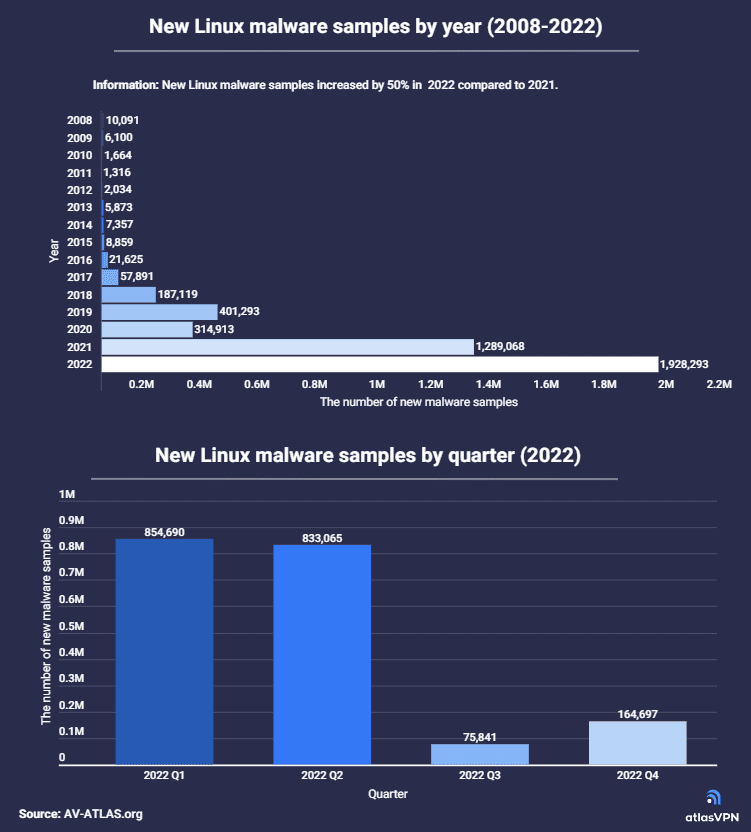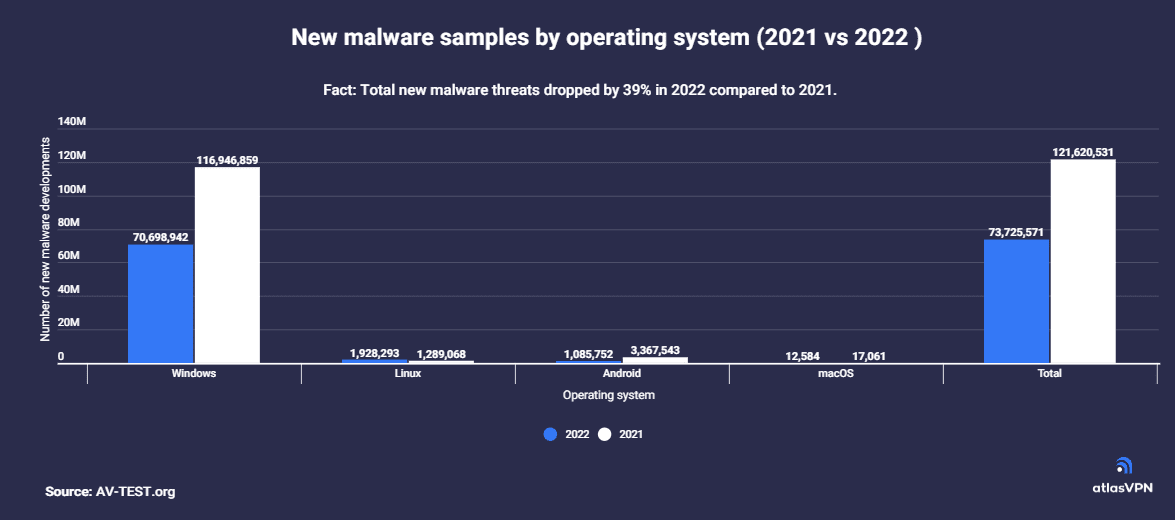Linux is renowned for its robust security; however, it has become increasingly susceptible to malicious attacks in recent times. As an increasing proportion of devices and servers rely on Linux operating systems, the prevalence of malware targeting these systems continues to rise.
Atlas VPN released data revealing an alarming spike in new malicious Linux software threats, with the total number soaring to 1.9 million, which is a 50% increase from the year prior.

The first quarter of 2022 revealed an alarming surge in Linux malware samples, with 854,690 distinct instances detected. Fortunately, the second quarter saw a decrease from this figure to 833,065 – a 3% reduction from initial figures.
In the third quarter of 2022, Linux malware saw a remarkable decrease; its numbers fell by an astonishing 91% to 75,841. However, this trend didn’t last into 2022 as there was a resurgence in malicious activity with the fourth quarter seeing 117% growth reaching 164,697.
New malware threats on other operating systems decline
Linux malware reached new heights in 2022, but the total number of new malware developments decreased. In 2021, 121.6 million samples were detected, but that number dropped to 73.7 million in 2022—a decrease of 39%.

Android users experienced a substantial decrease in newly-programmed malware. Compared to 2021’s figure of 3.4 million malicious samples, the amount fell by 68% to 1.1 million in 2022.
Despite being the most frequent target for malicious software, Windows saw a remarkable 40% decrease in discovered malware samples. In 2021, there were 116.95 million new threats detected; this number dropped drastically to 70.7 million by 2022.
The Atlas VPN study shows that the new malware targeting macOS systems decreased significantly from 17,061 in 2021 to 12,584 the following year, representing an impressive 26% reduction.
As Linux remains an open-source operating system, it has the benefit of receiving constant review from tech experts leading to improved security and fewer exploitable vulnerabilities. Unfortunately, this also means that malicious actors are increasingly seeing value in targeting Linux users too, with new malware numbers indicating a changing threat landscape for all those relying on the operating system. Therefore, it is critical more than ever before to prioritize user safety when using any version of Linux.
How users can protect their systems from malware
Protecting your computer system from malicious software or malware is a priority. To ensure the safety of your system and information, it is essential to implement several protective measures.
- Keeping your operating system and all installed software up to date is the first step in protecting yourself against malware. These updates often include security patches designed to protect against viruses, worms, and other threats.
- Your decision to use a non-administrator account on the system by default is also an important safety feature as this will limit any malware damage that malicious programs can cause.
- Take extra precautions when clicking links or downloading files online as this could be a source of malware infections. When opening email attachments or images, thoughtful consideration should be taken before doing so. Similarly, if you are asked to download any software from pop-up windows—avoid trusting them outright as they may contain viruses that can infect and damage your personal information.
- File-sharing should also be done cautiously. Refrain from sharing potentially confidential data with untrusted sources even if asked for.
- Finally, installing a comprehensive cyber protection solution can provide additional safety measures necessary for protecting against potential threats lurking online.
Source: Atlas VPN
Read next: Global cyberattacks increase by 38% in 2022, reveals Check Point Research








